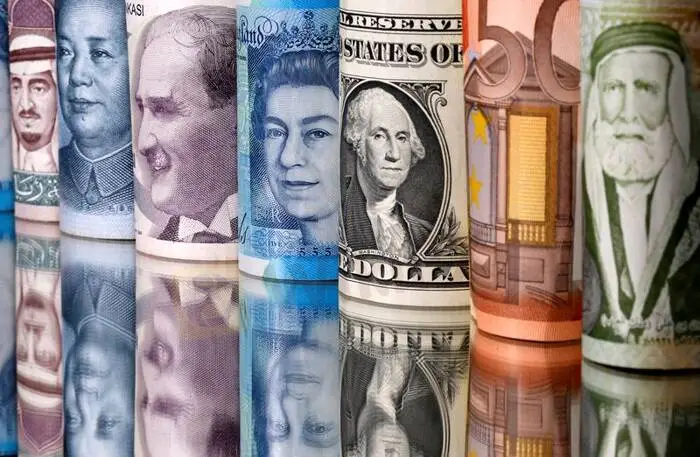简体中文
繁體中文
English
Pусский
日本語
ภาษาไทย
Tiếng Việt
Bahasa Indonesia
Español
हिन्दी
Filippiiniläinen
Français
Deutsch
Português
Türkçe
한국어
العربية
Dollar rally stalls, while high oil prices boost commodity currencies,
Abstract:Higher commodity prices were supporting the Canadian and Australian dollars on Thursday, while a pause in this week’s rally in U.S. Treasury yields meant the dollar also marked time.
The dollar edged lower on Thursday as this weeks rally in U.S. Treasury yields paused, and currencies such as the Canadian and Australian dollars were boosted by high commodity prices and continued optimism about future global economic growth.
The Aussie firmed 0.3%, extending advances from the previous day, and the Canadian dollar was heading back towards its 10-week high touched on Wednesday with one U.S. dollar worth C$1.245.
Strong Australian jobs data and a high Canadian inflation print were also factors, though the gains in commodity currencies were broad based, with the dollar losing 0.2% on the Norwegian krone.
“Overnight commodity prices were the big driver for commodity currencies, but youve still got the undertone that (COVID-19 variant) Omicron is not going to have a lasting detrimental impact on the global economic outlook,” said Kim Mundy, senior economist and currency strategist at Commonwealth Bank of Australia.
Governments worldwide are easing quarantine rules and reviewing coronavirus curbs as they bid to launch their economies back into some version of normality, motivated by the lower severity of the Omicron variant. That has helped commodities rally. [nL8N2TU3HV
Brent crude futures touched $89.17 on Wednesday, its highest level since Oct. 2014, supported in by a tight short-term supply outlook, and were steady a little below that on Thursday. [O/R]
Newcastle coal futures are at their highest point since October, and iron ore also gained.
Elsewhere the euro and sterling continued to edge higher, gradually regaining some ground after having their worst days in a month on Tuesday, when the dollar caught a lift from a jump in U.S. Treasury yields.
The European common currency was last at $1.1351, the pound was at $1.3636, and the yen was a little softer at 114.46 per dollar
Overall this left the dollar index, which measures the greenback against six major peers, at 95.555.
U.S. Benchmark 10-year note yields were at 1.8557%, just off their two-year high of 1.902% early on Wednesday.
The gains come as traders prepare for the United States to tighten monetary policy at a faster pace than previously thought. Fed funds futures have fully priced in a rate hike in March and four in all for 2022.
The median forecast of analysts polled by Reuters is for the Fed to raise rates three times this year, starting in March, to 0.75-1.00% by end-2022, but nearly half of the 86 people surveyed said they expected four hikes.
Bond yields are rising elsewhere, too. Germanys 10-year bond yield rose above 0% for the first time since 2019 on Wednesday, providing support to the euro. [GVD/EUR]
(Reporting by Alun John; Editing by Kenneth Maxwell and Gerry Doyle)

Disclaimer:
The views in this article only represent the author's personal views, and do not constitute investment advice on this platform. This platform does not guarantee the accuracy, completeness and timeliness of the information in the article, and will not be liable for any loss caused by the use of or reliance on the information in the article.
WikiFX Broker
Latest News
Bitpanda, Crypto.com, OKX Secure MiCA Licenses Europe
The Dangers of Boiler Room Scams: It’s All Too Good to Be True!
What Every Investor Can Learn from The Wolf of Wall Street
UK Watchdog's Latest Warning
Five Common Mistakes in Trading
SquaredFinancial offers Trump & Melania meme coins
What is the Best Time to Trade Forex?
Win Rewards & Celebrate Lunar NY with JustMarkets
BBC World Service to axe 130 jobs in bid to save £6m
AI Fraud Awareness Campaign: "We're Not All F**ked"
Currency Calculator






